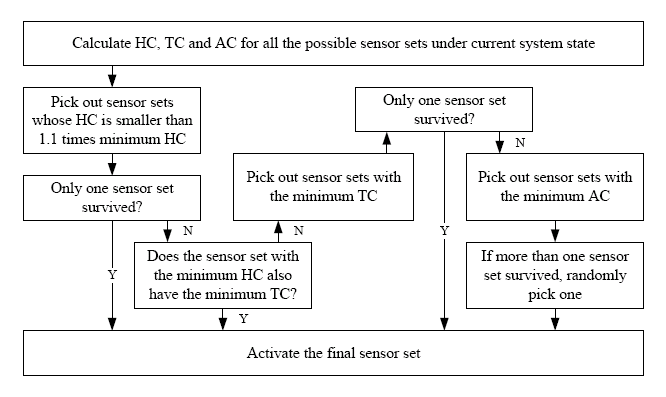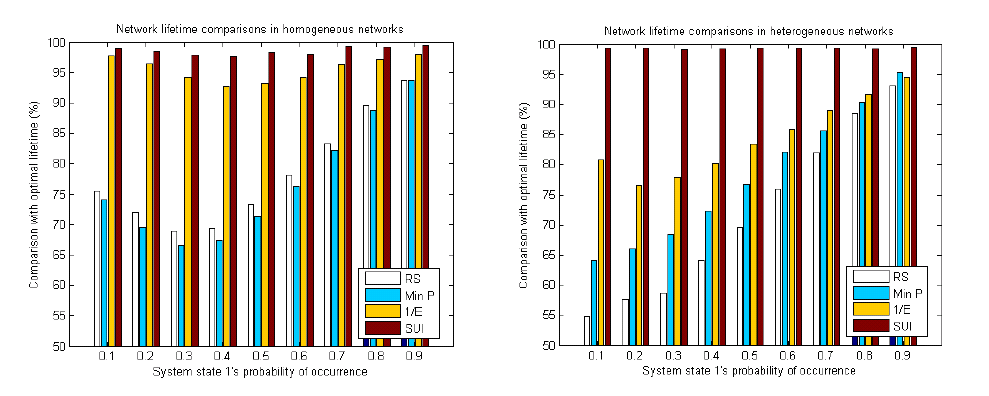
SUI Calculation
SUI is calculated as a sensor's relative ideal lifetime (SRIL) devided by its actual remaining lifetime (SRL).

SRIL shows the relative lifetime of each sensor in the "ideal" case, where there is no energy constraint, and the base station randomly selects a possible sensor set to meet the application QoS. Hence, each sensor set will be selected equally over time. The more often a sensor appears in the possible sensor sets, the longer it should be active to support the application QoS. Suppose an application runs in Ns system states, each of which has corresponding QoS requirements and a probability of occurrence P(i) (estimated on the fly), i=1..Ns. For each system state i, there are Np(i) possible sensor sets, described as F(i,j), i=1..Ns, j=1..Np(i), that can provide the required QoS. Then, for each sensor k,

Sensor Selection Criteria
Since a sensor set usually includes multiple sensors, each of which might have different SUI values, a set of criteria is needed to evaluate every possible sensor set based on the SUI of the individual sensors, so that the most preferable set is selected to prolong the network lifetime. Define the sensor with the highest cost in each possible sensor set as HC; the total cost of a possible sensor set as TC; the average cost of a possible sensor set as AC. The sensor selection process is described in the following figure.

Simulation Results
We use MATLAB simulations to compare our proposed sensor selection scheme using SUI with random selection, minimum power selection and 1/E selection, in terms of network lifetime with QoS support. General cases are studied in homogeneous and heterogeneous sensor networks. We also examine the difference between the network lifetime supported by our proposed sensor selection scheme and the optimal network lifetime.
In homogeneous scenario, 10 motion sensors are randomly located in a 10m◊10m warehouse. For simplicity, they are assumed to have circular sensing areas with the specified radius. The warehouse monitoring system has two system states. System state 1 requires 100% coverage of the warehouse, while system state 2 requires no less than 80% coverage of the warehouse. In heterogeneous scenario, 3 motion sensors, 3 vibration sensors and 3 sound sensors are randomly located in a 10m◊10m warehouse. The applicationís QoS requirements remain the same as for the homogeneous network case.

Simulation results show that the proposed cost function and the corresponding sensor selection criteria consider different diversities in a sensorís power consumption, remaining energy and QoS capability, hence outperforming the existing sensor selection schemes in both homogeneous networks and heterogeneous networks. Furthermore, the network lifetime supported by the proposed sensor selection scheme closely approaches the optimal network lifetime. Compared to existing sensor selection schemes, our approach has clear advantages, especially for heterogeneous, single-hop networks, as it extends network lifetime with QoS support.
For more information, please email Ou Yang.